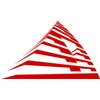Filter interviews by
Mol Information Processing Services India Data Analyst Interview Questions and Answers
Mol Information Processing Services India Data Analyst Interview Experiences
1 interview found
(2 Questions)
- Q1. What is star schema
- Ans.
Star schema is a type of data warehouse schema where a central table (fact table) is connected to multiple dimension tables.
Central table (fact table) contains the primary data of interest
Dimension tables contain descriptive attributes related to the data in the fact table
Each dimension table is connected to the fact table through a foreign key
Allows for efficient querying and analysis of data
- Q2. What is snowflake
- Ans.
Snowflake is a cloud-based data warehousing platform that allows for easy and scalable data storage and analysis.
Snowflake is a popular cloud-based data warehousing platform used for storing and analyzing large amounts of data.
It offers features like automatic scaling, data sharing, and support for both structured and semi-structured data.
Snowflake uses a unique architecture that separates storage and compute, allowing...
Skills evaluated in this interview
Top trending discussions






Interview questions from similar companies
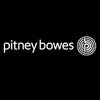
I applied via Job Portal and was interviewed before Dec 2023. There were 3 interview rounds.
SQL Test with 5 questions
(2 Questions)
- Q1. Approach towards solving the SQL Queries from the test
- Q2. Past Experiences
(2 Questions)
- Q1. Resume related Questions
- Q2. Power BI and SQL related questions. How to approach in a dashboard building process
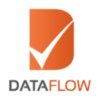
I applied via LinkedIn and was interviewed in Jan 2024. There was 1 interview round.
(2 Questions)
- Q1. What are different agile methodologies
- Ans.
Agile methodologies are iterative and flexible approaches to project management.
Scrum: Focuses on delivering small increments of work in short iterations called sprints.
Kanban: Visualizes work on a board and limits work in progress to improve flow.
Extreme Programming (XP): Emphasizes continuous feedback, frequent releases, and close collaboration.
Lean: Aims to eliminate waste and maximize customer value through continu...
- Q2. Difference between BRD and FRD
- Ans.
BRD and FRD are both documents used in the software development process, but they serve different purposes.
BRD stands for Business Requirements Document and focuses on the business needs and objectives of a project.
FRD stands for Functional Requirements Document and outlines the specific functionalities and features of a software system.
BRD is more high-level and describes the 'what' and 'why' of a project, while FRD i...

I applied via Referral and was interviewed before Oct 2023. There was 1 interview round.
(4 Questions)
- Q1. About ourselves
- Q2. Professional experience
- Q3. Salary expectation
- Q4. Notice period, if experienced
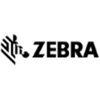
(2 Questions)
- Q1. Normal question about past experience
- Q2. When you can join and all
SQL test on Select query, insert, create

I appeared for an interview before Mar 2024, where I was asked the following questions.
- Q1. What is your approach to formatting data?
- Ans.
I ensure data is clean, consistent, and visually appealing for analysis and reporting.
Standardize formats: Use consistent date formats (e.g., YYYY-MM-DD) across datasets.
Remove duplicates: Identify and eliminate duplicate entries to maintain data integrity.
Use clear labels: Ensure column headers are descriptive (e.g., 'Patient Age' instead of 'Age').
Apply conditional formatting: Highlight key metrics, such as overdue t...
- Q2. What is involved in creating dashboards?
- Ans.
Creating dashboards involves data collection, visualization, and user interaction to present insights effectively.
Identify key metrics: Determine what data is most relevant for decision-making, such as sales performance or customer satisfaction.
Data integration: Gather data from various sources like databases, spreadsheets, or APIs to ensure a comprehensive view.
Choose visualization tools: Use software like Tableau, Po...

I applied via Approached by Company and was interviewed before May 2022. There was 1 interview round.
(5 Questions)
- Q1. They don’t take interview and they just ask money for for entering and never provide you job
- Q2. They just fooling people
- Q3. They are fake and unprofessional
- Q4. They provide my salary and then I ended my month and they did not gave me my salary
- Q5. Dynpro is fake company who provide the fake job and salary slips
Interview Preparation Tips

I applied via Walk-in and was interviewed in Dec 2023. There were 2 interview rounds.

(1 Question)
- Q1. Any question related Medical Billimg

Senior Data Analyst Interview Questions & Answers
Starmark Softwareposted on 4 Oct 2023
I applied via Referral and was interviewed before Oct 2022. There were 3 interview rounds.

(1 Question)
- Q1. Basic questions about the role and responsibilities of my previous organisation
(1 Question)
- Q1. One on one round is about my skills

Forecasting problem - Predict daily sku level sales
(2 Questions)
- Q1. What is difference between bias and variance
- Ans.
Bias is error due to overly simplistic assumptions, variance is error due to overly complex models.
Bias is the error introduced by approximating a real-world problem, leading to underfitting.
Variance is the error introduced by modeling the noise in the training data, leading to overfitting.
High bias can cause a model to miss relevant relationships between features and target variable.
High variance can cause a model to ...
- Q2. Parametric vs non parametruc model
- Ans.
Parametric models make strong assumptions about the form of the underlying data distribution, while non-parametric models do not.
Parametric models have a fixed number of parameters, while non-parametric models have a flexible number of parameters.
Parametric models are simpler and easier to interpret, while non-parametric models are more flexible and can capture complex patterns in data.
Examples of parametric models inc...
Skills evaluated in this interview
Mol Information Processing Services India Interview FAQs
Tell us how to improve this page.
Mol Information Processing Services India Interviews By Designations
- Mol Information Processing Services India SQA Engineer Interview Questions
- Mol Information Processing Services India Software Specialist Interview Questions
- Mol Information Processing Services India Data Analyst Interview Questions
- Mol Information Processing Services India Deck Cadet Interview Questions
- Mol Information Processing Services India Associate Global Engineer Interview Questions
- Mol Information Processing Services India Documentation Executive Interview Questions
- Mol Information Processing Services India Chief Officer Interview Questions
- Mol Information Processing Services India Associate Interview Questions
- Show more
Interview Questions for Popular Designations
- Senior Data Analyst Interview Questions
- Junior Data Analyst Interview Questions
- Data Analyst Intern Interview Questions
- Data Engineer Interview Questions
- Data Research Analyst Interview Questions
- Data Scientist Interview Questions
- Data Entry Operator Interview Questions
- Associate Data Analyst Interview Questions
- Show more
Mol Information Processing Services India Data Analyst Interview Process
based on 4 interviews
Interview experience
Interview Questions from Similar Companies

Mol Information Processing Services India Data Analyst Reviews and Ratings
based on 6 reviews
Rating in categories
|
Executive
108
salaries
| ₹1.8 L/yr - ₹5.6 L/yr |
|
Senior Executive
66
salaries
| ₹3 L/yr - ₹6.5 L/yr |
|
Executive Accountant
54
salaries
| ₹2.1 L/yr - ₹5 L/yr |
|
Junior Executive
51
salaries
| ₹1.5 L/yr - ₹3.4 L/yr |
|
Team Lead
30
salaries
| ₹4.8 L/yr - ₹9.5 L/yr |
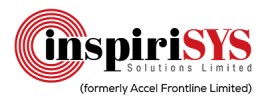
Accel Frontline

Pitney Bowes

DynPro
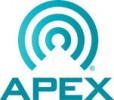
Apex CoVantage
- Home >
- Interviews >
- Mol Information Processing Services India Interview Questions >
- Mol Information Processing Services India Data Analyst Interview Questions



